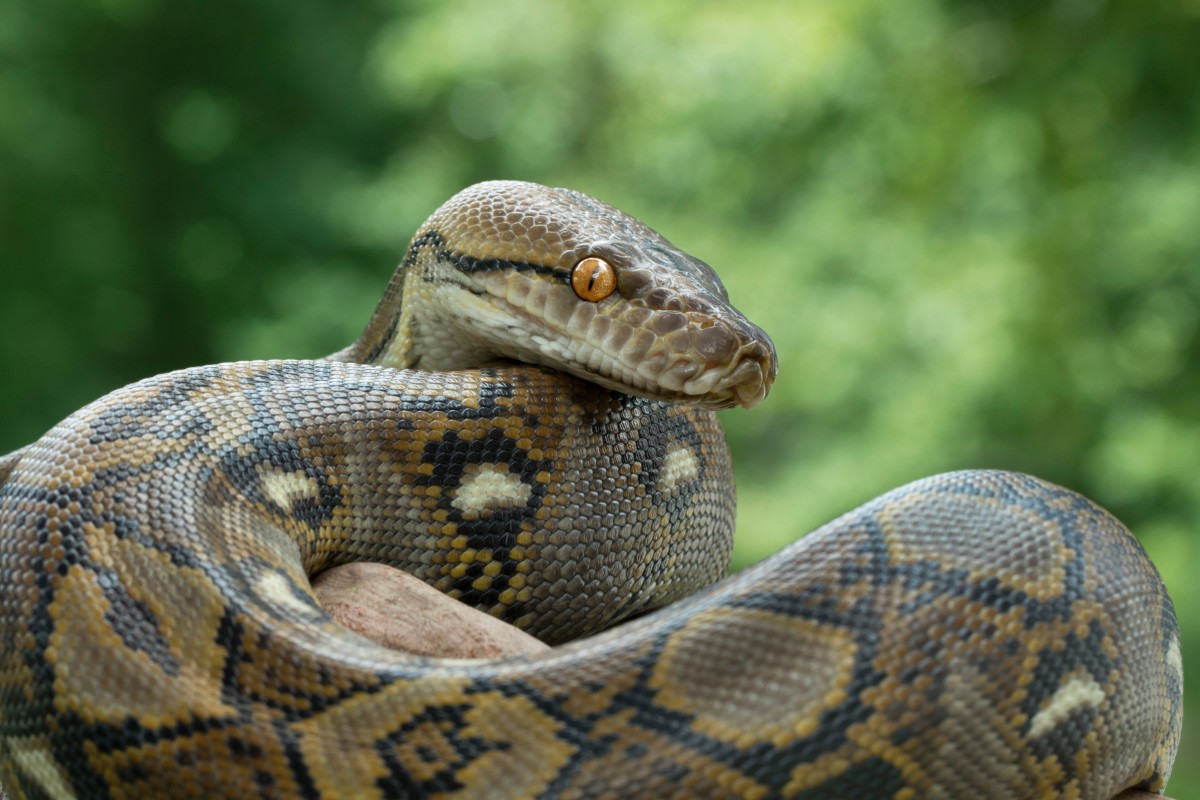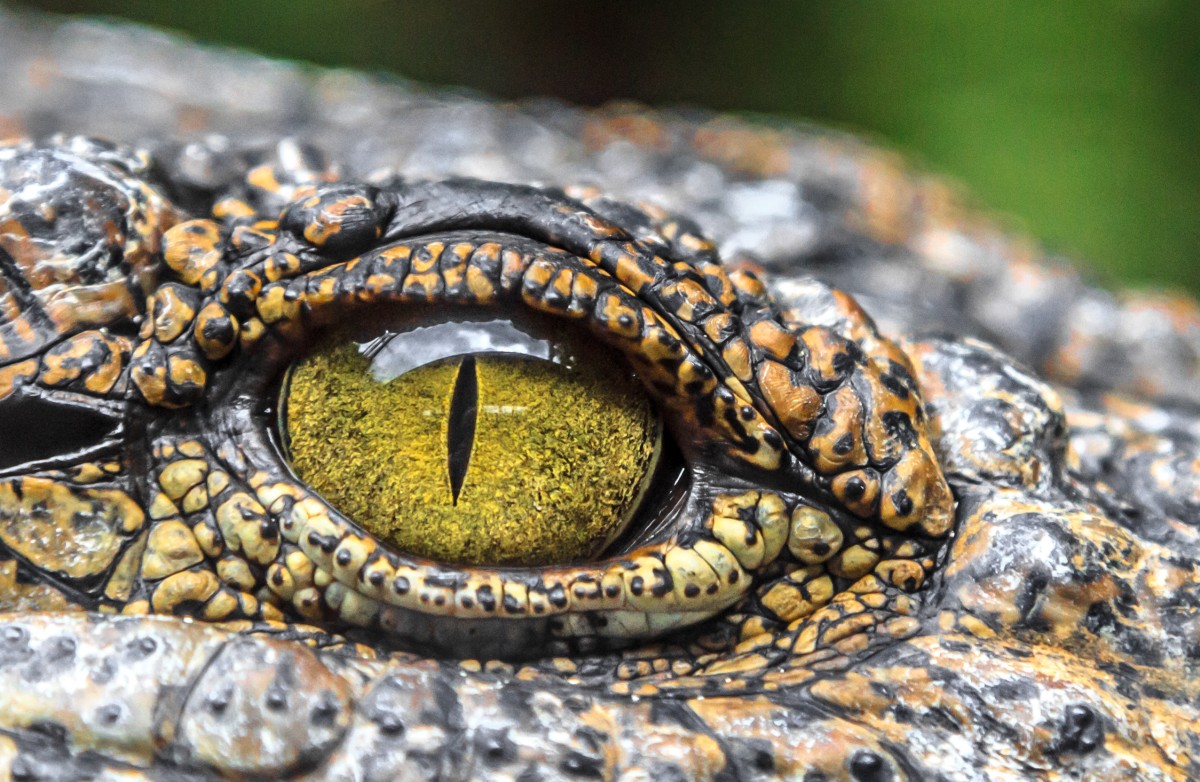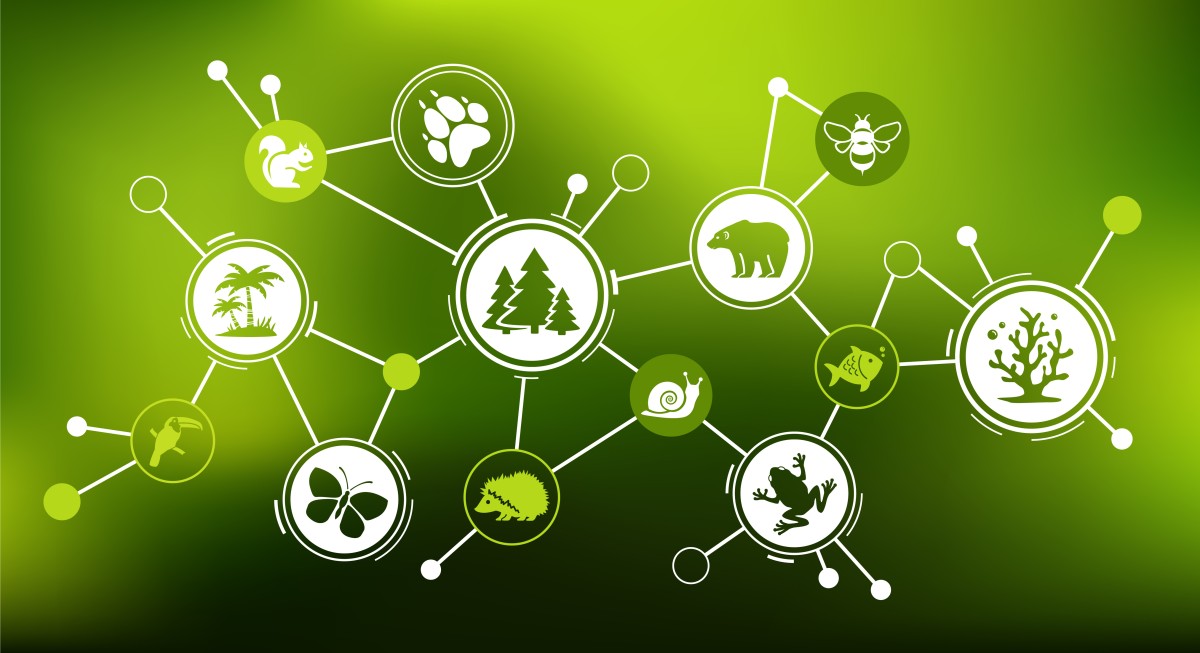 As a business involved in exotic skins and leathers, we have a vested interest in ensuring both the ethical framework as well as the sustainability of the systems and suppliers we rely on. While businesses have an obligation to protect and secure the future of their business, we’re not alone in our efforts. There are research, veterinary and animal rights organizations, legislative bodies and enforcement agencies involved and each contributes to the effort.
As a business involved in exotic skins and leathers, we have a vested interest in ensuring both the ethical framework as well as the sustainability of the systems and suppliers we rely on. While businesses have an obligation to protect and secure the future of their business, we’re not alone in our efforts. There are research, veterinary and animal rights organizations, legislative bodies and enforcement agencies involved and each contributes to the effort. The scientific lab and field research done by these organizations has provided revolutionary insight into how we think about reptiles' well-being along the supply chain, from capture to transport to holding to captive breeding and finally processing. While we’re doing the best we can to contribute to ethics and sustainability and communicate that to our customer, we’d like to review the very important non-industry organizations that provide direction for us.
Quick Links
- Convention on International Trade in Endangered Species (CITES)
- International Union for Conservation of Nature (IUCN)
- Crocodile Specialist Group (CSG)
- Southeast Asian Reptile Conservation Alliance (SARCA)
- Business for Social Responsibility (BSR)
CITES
The Convention on International Trade in Endangered Species of Wild Fauna and Flora (CITES) is the most recognizable organization in the management of the exotic skin trade. CITES is an international agreement between the governments of nearly 200 member countries aiming to ensure that international trade in specimens and plants does not threaten their survival. The CITES resolution was adopted at the 1963 IUCN meeting and entered into force on July 1, 1975 in response to the steep decline of populations of various animal species due to trade.
CITES, based in Switzerland, works by subjecting trade in CITES-listed species to certain protections, a combination of licenses, permits, quotas and other rules designed to conserve the species’ survival in their various circumstances. One or more authority is responsible for managing the set of rules that apply to each species (for example, a country’s wildlife agency) and one or more scientific authority is responsible for designing the policies that protect those species (for example, IUCN). CITES sets the minimum standard for the trade of each species and then each member country can layer its own rules on top of that to protect their own priorities and account for its limitations.
Nearly 6,000 species of animals and 30,000 species of plants are protected by CITES. Depending on the degree of protection they need, CITES species are broken into three categories:
- Appendix I contains species threatened with extinction under which trade is only acceptable under extraordinary circumstances.
- Appendix II species are not in danger but must be trade-controlled to prevent exploitation. This category includes about 1,400 animal species and 25,000 plant species.
- Appendix III fauna and flora are protected in at least one country, and so CITES countries participate in controlling its trade. There are about 270 animal species and 30 plant species listed under Appendix III.
Exporting products containing specimens from Appendix I and II requires an export permit. For Appendix III species, an export permit is needed if the species is originating from the country that listed it as Appendix III.
CITES also issues re-export licenses for certain species under Appendix II and III. A re-export permit is needed if exporting specimens that were previously imported, whether as skins or finished goods. An example of this would be if exotic skins are exported from the USA to Italy, goods are manufactured from the skins in Italy and then those finished goods are re-exported to the USA to be sold in stores.
To see how CITES regulations are applied in your country, you can consult your local management authority.
 International Union for Conservation of Nature (IUCN)
International Union for Conservation of Nature (IUCN)
Arguably, without the IUCN, no other conservation organization would exist. It is the original sustainable trade organization. While founded in France in 1948, it is now based in Switzerland. It is focused on research, advocacy and education on the sustainable use of natural resources with over 1,300 members (both government and private organizations), 15,000 contributing experts and activities in over 160 countries. The IUCN works to tackle conservation, environmental and ecological issues, spread across six commissions:
- Commission on Education and Communication (CEC) distributes, educates and trains the conservation community on IUCN findings;
- Commission of Ecosystem Management (CEM) provides guidance and support to maintain healthy ecosystems and biodiversity;
- Commission on Environmental, Economic and Social Policy (CEESP) generates and disseminates knowledge on how to balance the conservation of nature with humans' social, cultural, environmental and economic needs;
- Species Survival Commission (SSC) provides information to the IUCN on how species and their ecosystems depend on each other and how they support human livelihoods;
- World Commission on Environmental Law (WCEL) provides legal support for environmental conservation and sustainable development globally;
- World Commission on Protected Areas (WCPA) develops policy advice on topics of protected areas.

Crocodile Specialist Group (CSG)
The Crocodile Specialist Group (CSG) is one of more than 120 species specialist groups within IUCN’s Species Survival Commission. It was formed in 1971 and, with around 600 members, has since become one of the most influential organizations in the trade of alligator skin, crocodile skin, and other exotic leathers. Its main mission is to help the IUCN and SSC to meet their missions with regards to the conservation, management and sustainable use of crocodile species. Its stated goals as they pertain to crocodile species are specifically:
- To provide expert opinion and advice on conservation, management and sustainable use of crocodiles for the various industry participants;
- To encourage and assist in capacity-building in order to achieve the mission;
- To balance human uses and benefits with those of the animals and their habitats, as per widely adopted standards;
- To identify problems in crocodilian conservation, design, implement and test solutions and adapt those solutions over time;
CSG pioneered the concept of conservation through sustainable use, and is, largely, responsible for the exploding populations of several exotic species worldwide (many from near extinction in the 1970s). CSG experts perform research, draw conclusions and advise and train governments, wildlife management agencies and other industry participants on the conservation needs of crocodilian populations.
Southeast Asian Reptile Conservation Alliance (SARCA)
SARCA’s mission is to improve the responsibility and transparency of the Southeast Asian supply chain of reptile skins, primarily python skin, lizard skin and snake skin. Members include luxury brands, manufacturers, tanneries, farmers, trade associations, non-profits, academic and government institutions. SARCA’s research guides corporate and public policy on population controls, animal treatment through the supply chain, habitat preservation and human welfare.
SARCA, based in Paris, shapes supply chain policies on how animals are captured, transported, kept (both short term and long term), raised (in the case of farms), and killed. At the heart of this guidance are general animal welfare principles, animal welfare principles specific to individual species, and sustainability as it pertains to both the species and their environments, as well as human considerations.
The animal welfare piece is based on the five freedoms established by the Farm Animal Welfare Council of the United Kingdom and adopted by national veterinary associations like WSAVA Global Veterinary community and animal cruelty groups like the Animal Humane Society, as well as the World Organization for Animal Health. These five freedoms are:
- Freedom from hunger or thirst by ready access to fresh water and a diet to maintain full health and vigor;
- Freedom from discomfort by providing an appropriate environment including shelter and comfortable resting area;
- Freedom from pain, injury or disease by prevention or rapid diagnosis and treatment;
- Freedom to express most normal behavior by providing sufficient space, proper facilities, and, as appropriate, company of the animal’s own kind;
- Freedom from fear and distress by ensuring conditions and treatment avoid mental suffering.
The animal welfare guidelines specific to these species is based on years of research, SARCA insists that the following additional considerations are taken for pythons, lizards and snakes:
- These reptiles should never be thrown, dropped, or dragged. Even minimal impact from these activities tends to cause severe internal injuries.
- These reptiles are stressed by vibrations, chemical pollution (including petrol from vehicles or boats), and human activity, so limit their exposure to these things.
- These reptiles cannot regulate their own temperature. They are dependent on ambient conditions for this, so it is crucial that air, light, temperature and humidity conditions are well managed. These conditions should vary slightly for feeding, mating, nursing, general living, and the reptiles’ other various stages of life.
- In times of distress, most reptiles seek shelter in dark and confined spaces. So it is important to mimic this environment in situations where the animals could become anxious.
- Don’t mix sizes and species. Cannibalism is common among reptiles, so it is important to keep them separated by size and species.
In addition to limiting the stress on the animals, sustainability is paramount. That means that the hunting and farming of these animals must not compromise the survival of the species or their environments. To protect the species, SARCA research informs both quotas to make sure the animals are not over-hunted and size limits to ensure that females are allowed to grow to an age where they can reproduce. Research shows that the populations of these species are at stable, abundant levels.
From an environmental standpoint, these species are super-predators which means they tend to dominate their ecosystem in a way that negatively affects biodiversity. In other words, they eat other species into near extinction in their ecosystems. So controlled culling of these super-predators actually protects biodiversity. In addition, when humans can generate income from hunting or farming these species, it gives them an economic incentive to preserve the land and protect the habitat.
The human element is also interesting. Most of these reptiles are hand-caught by natives in remote parts of Southeast Asia and are sold to distributors or processing facilities for approximately $30 each. For someone who earns just a few dollars a day, this is a substantial economic boost. Also, in these areas, the abundance of these aggressive reptiles threatens human safety. The rules on the ethical ways to handle the reptiles also factor in the human danger involved.
Business for Social Responsibility (BSR)
Institutions like IUCN and CITES have formed the regulatory framework for sustainability and ethics. But, increasingly, companies (and people) are looking for ways to be more sustainable above and beyond what the law currently requires. For both virtuous and business reasons, companies want to maintain ethical standards ensuring people and animals are treated fairly and sustainability standards ensuring species populations and their natural habitats are conserved, all while keeping their customers, suppliers, employees and investors happy. This is no small task.
Operating at high ethical and sustainable standards requires costly changes to supply chains and operations. It requires heavy investment, training and retraining, all while staying on production timelines and budgets so companies can deliver on-time in the quality and price points to which their customers are accustomed.
There are a number of organizations that exist to help companies navigate these complex challenges. Business for Social Responsibility (BSR) is one of the leaders in this area. BSR helps its 250+ member companies integrate sustainability into its strategy and operations to “create and deliver products and services in a way that treats people fairly, meet individuals’ needs and aspirations within the boundaries of our planet, and encourage market and policy frameworks that enable a sustainable future.”
BSR dates back to the Social Venture Network (SVN), founded by socially-minded entrepreneurs in the late 1980’s. In 1991, SVN spun off BSR with 51 member companies to influence policy formation in Washington D.C. However, by 1994, BSR’s mission had shifted from influencing public policy to working with companies to integrate social and environmental considerations into their core business. As their focus transitioned from government to corporate, BSR moved their headquarters from Washington D.C. to San Francisco. Between 1994 and 1999, they broadened their focus areas from just environment to:
- environment
- human rights
- community economic development
- governance and accountability.
In 2001 and 2002, BSR opened offices in Hong Kong and Paris, respectively, followed by offices in Copenhagen, Guangzhou, New York, Shanghai and Tokyo. This geographical breadth gave BSR the opportunity to understand the diverse global sustainability challenges.
Throughout the years of consulting engagements, research and collaborations, BSR has undertaken projects in an effort to achieve these 17 goals:
- no poverty
- zero hunger
- good health and well-being
- quality education
- gender equality;
- clean water and sanitation
- affordable and clean energy
- decent work and economic growth
- industry, innovation and infrastructure
- reduced inequalities
- sustainable cities and communities
- responsible consumption and production
- climate action
- life below water
- life on land
- peace, justice and strong institutions
- partnerships for the goals
BSR collaborates with hundreds of organizations, like SARCA, and initiatives which align around one or more of the goals above.
Ethics and sustainability in the exotic skins industry doesn’t happen with one organization, with one business, or even one conscious and aware customer. Efforts must be made throughout the supply chain and with the assistance of governmental and non-governmental organizations with a common goal and mission.
PanAm Leathers is proud to do our part in ensuring that the industry we have been a part of for nearly 70 years, starting with Jack Mendal’s exotic skin tannery in the 50’s. Longevity in this industry doesn’t happen without an understanding of our role in ensuring the sustainability of the industry and its supply chain and employing an ethical framework for the products we sell.
If you’d like to talk more about our products or policies, please reach out to our team today!



